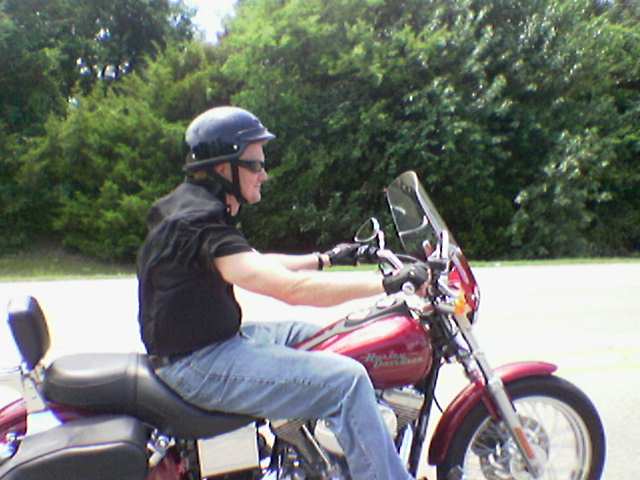Distortion
When you finally upgrade your acoustic to a brand new electric guitar, and you plug it into the practice amp that came with it, the first thing you expect is to sound like Jimi Hendrix on acid. Oh, wait, Jimi Hendrix was on acid. Anyway, what you may be wondering is, why does this guitar sound more or less like my acoustic guitar, only louder. The answer, my friend, is distortion. The one guitar effect that is emblematic of Rock and/or Roll is quite simply distortion, also known as overdrive. If you are fortunate, your amp comes with an overdrive button, like the Fender 15G Frontman does. Distortion is just an effect which makes the signal sound like it has been overdriven through a tube amp. This gives it that edgy rock sound.
Compression
However, even if the amp supports some form of distortion, what you really lack, especially with a whammy bar, is sustain. That gives you the ability to really rock out while you shake your guitar around and wave it in front of the amp, and slam the whammy bar down for that signature Jimi Hendrix growl. I know, by now you've cursed yourself for buying a cheap guitar with no sustain, or perhaps cursed the dealer who sold you this expensive guitar with no sustain. But none of that matters. All you need to get the long rockin' sustain is a little bit of compression. Compression works by cutting down the dynamic range of your signal, making the soft sounds louder and the loud sounds (relatively) softer. This makes your notes seem to last longer, because the louder sound right after the attack is dampened a bit, and as the vibrations fade, the volume is raised to compensate. Of course, all of this is subject to parameters controlling the compressor.
Pedals
To accomplish these effects, especially if they are not built into your amp, you need some kind of guitar pedal. This could be a chain of pedals, or it could be a single multi-effect pedal. Purists will say you need the chain of pedals going into your tube amp, but that can get, you know, expensive. And heavy. In this era of digital simulation, maybe close enough is good enough for you. I know it is for me; and it has the added advantage of being more portable. A small practice amp can go just about anywhere, and if you're just practicing for yourself, a multi-effects pedal with a headphone plug-in is all you need.
Ready to play
With just these two effects, you can go a long way by adjusting various parameters, such as how much gain to apply for distortion, or various envelope factors for compression. However, if you do pick up a multi-effects pedal, you can go way beyond this to add all kinds of effects like wah, ya-ya, crunch, etc., which are all just ways of writing in English that which can really only be experienced aurally.
Wednesday, August 29, 2007
Why doesn't my guitar rock?
Posted by
elhaf
at
3:09 PM
![]()
Subscribe to:
Post Comments (Atom)

1 comment:
hi i am new on here i am into [URL=http://www.mydjspace.net]dj remix[/URL] in my spare time. I will be able to contribute on this forum and should stick around!
Thanks.
Post a Comment